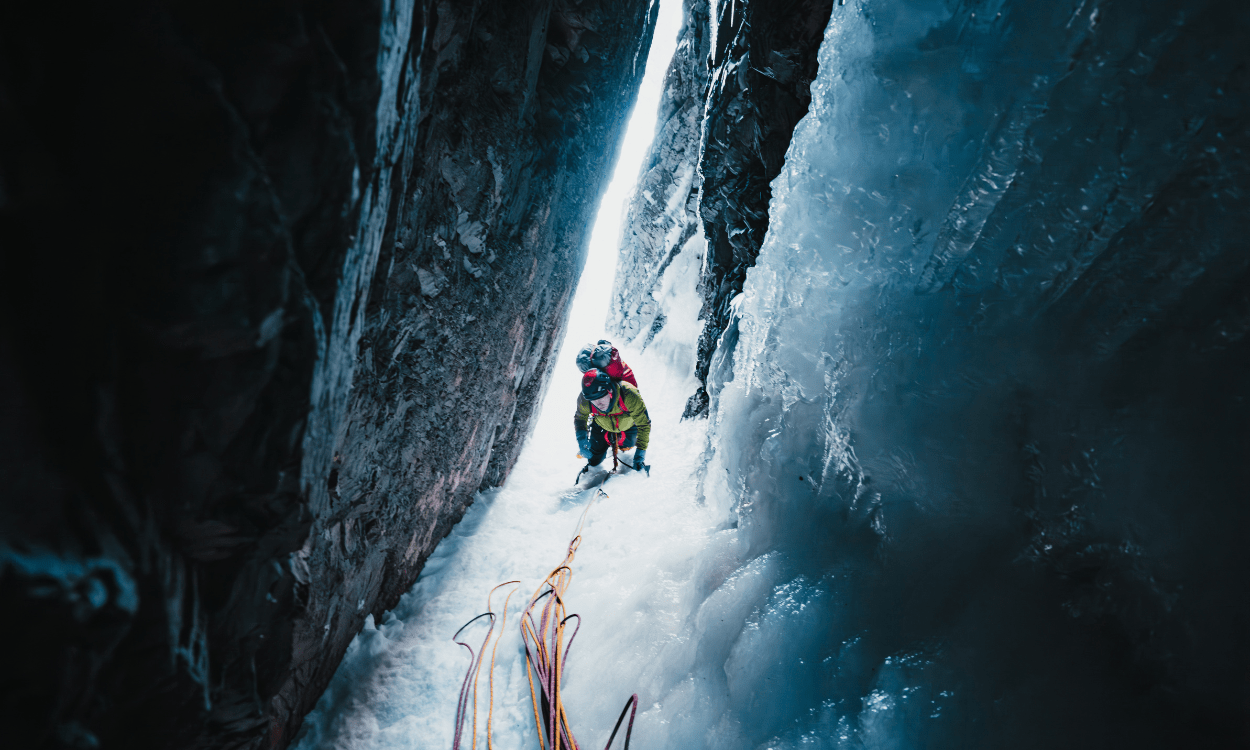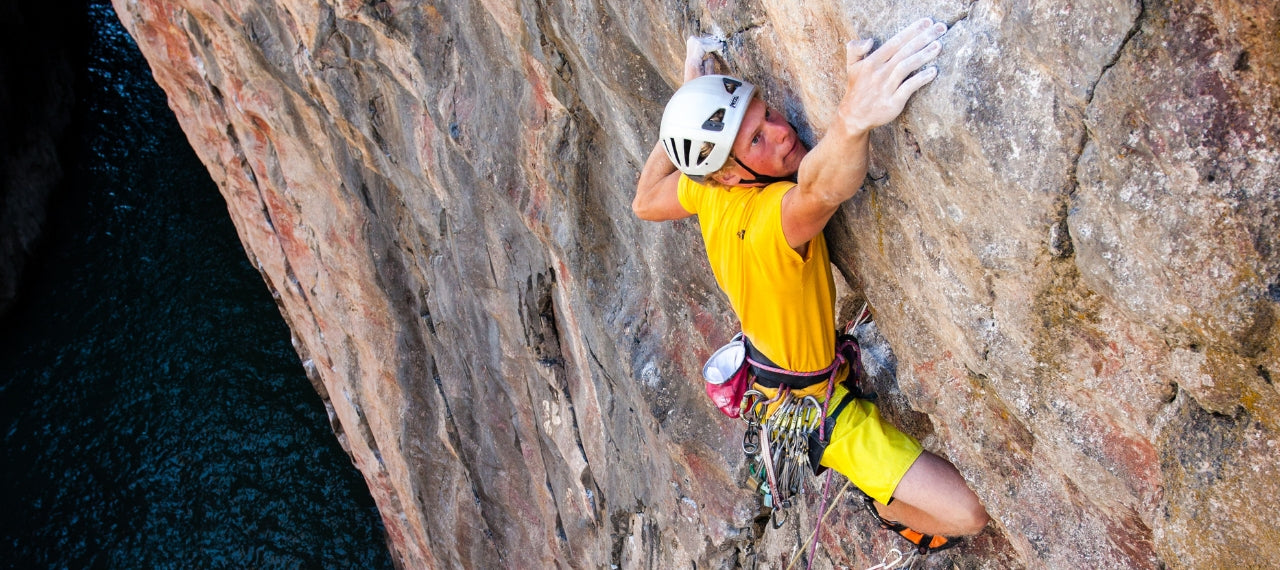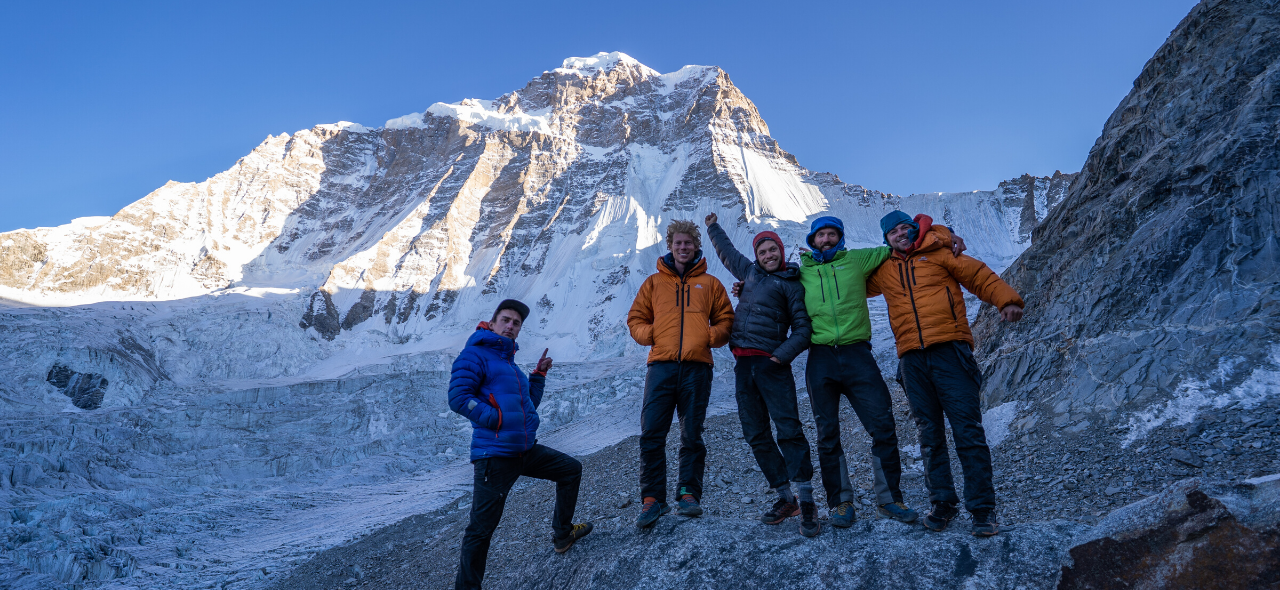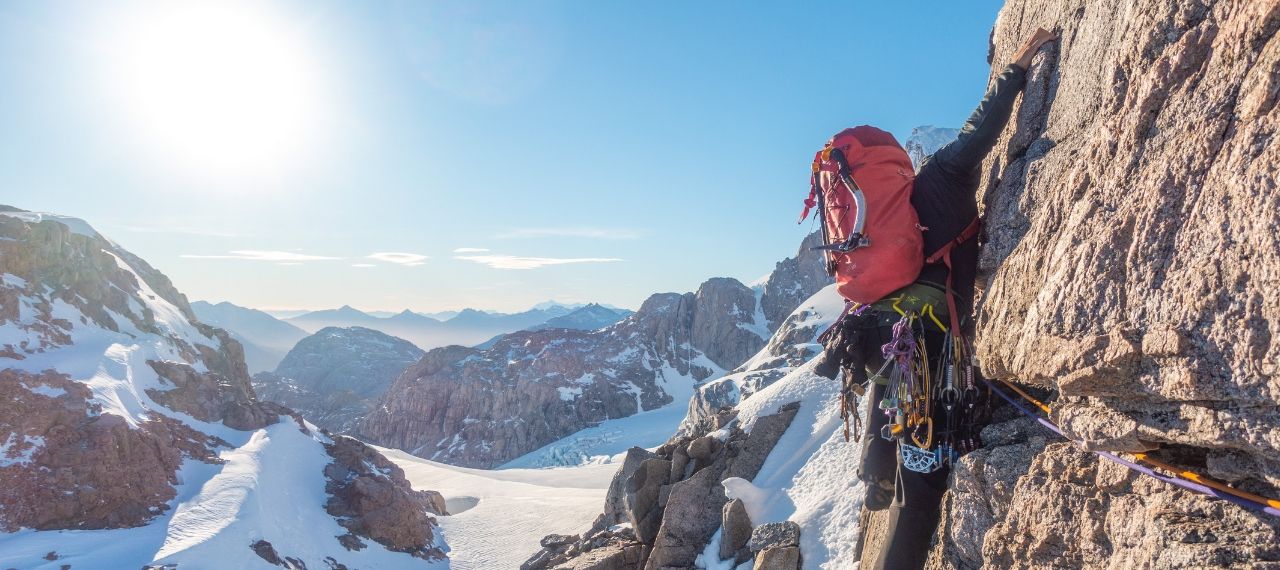
All Iced Out
In the late 19th century, ice climbing began to gain popularity in Britain, blooming out of Scotland’s harsh winters and mountainous terrain. Victorians began to scale icy cliffs and frozen waterfalls, carving steps into the ice to reach the top. With the turn of the century came a trickle of innovations — a 10-point crampon, improvements in ice axe technology — and by the 1930s, official records were being made of ice climbing routes in Scotland, Wales and the Lake District, with areas such as Ben Nevis and the Cairngorms attracting special attention.
As our winters warm and the UK’s frozen landscapes become increasingly rare, ice climbers have adapted by creating indoor facilities. But in the thick of winter, when conditions are just right, a small contingent of UK ice climbers continue to tackle frozen rock faces — juggling their odds with a constant freeze-thaw created by snow, wind and rain. The ice climbing ‘season’ might not last long, but there is an unquestionable thrill that comes with the impermanence of gullies filled with ice: here one day and gone the next.
Despite unpredictable conditions, it is possible to climb almost every year. The further north you travel, the better your chances. Here, we hear from Eilir Davies-Hughes and Ali Rose, two of the UK’s ice climbing experts, who give us the low-down on their favourite ice lines.

Name: Eilir Davies-Hughes
@eilir30
Occupation: Freelance photographer, climber and surfer
Home: North Wales
Favourite ice line: Cwm Cneifion
I grew up in North Wales, so the mountains feel like home. I began with scrambling, which quickly evolved into rock climbing, then winter climbing followed. You never know what you’re going to get in Eryri National Park, weather-wise. Cold spells never seem to last long enough for the turf to freeze and ice to build before the next major thaw, so when conditions do align, you’ve got to be very quick to take advantage. It can be hugely frustrating, but because it’s such a transient moment, I find the thrill of a successful ice climb unmatched. My go-to climbing area is Cwm Cneifion, or ‘The Nameless Cwm’. It’s a hanging valley, shaped by glacial erosion in the last ice age, overlooked by the Glyderau mountain range. When the water seeping through the valley’s edges freezes, it creates some of the best ice climbing in Wales.

I have a few favourite climbs. There’s Golden Girl Ali (IV, V), which I’ve made night-time ascents of before. Then there’s Clogwyn Du, a prominent cliff face with Hidden Gully (II) just to its left, running between two sheer spurs. Hidden Gully is narrow and exhilarating, especially because it’s only climbable in winter. At the top, you descend via Y Gribin (I). Left Hand Branch (IV) is another fantastic ice line, and is one of the most reliably iced-over areas in the valley, with steep slabs and chimneys. Cleft Gully (V, VI) is a fun horseshoe climb up a narrow ravine. The list goes on: the whole valley becomes a playground of steep climbs, with gusts of wind and snow billowing around the crags. While not strictly within Cwm Cneifion, the nearby Glyder Fawr and Tryfan mountains often ice over too, which adds to the mix.

Name: Ali Rose
@onhistoesaliirose
Occupation: Climber and kayaker
Home: Fort William
Favourite ice line: Aonach Beag
I love climbing, but not all climbing. Training, bouldering and paying attention to grades doesn’t excite me. It’s the camaraderie and the adventure that I love — and the sheer ridiculousness of climbing as a hobby. That’s why ice climbing is such a good fit for me; it’s adventurous, fun, and draws a community of great people together.
Aonach Beag is my favourite mountain. It’s one of the tallest mountains in the Scottish Highlands at 1,234 metres — ironic given its name translates from Gaelic as ‘little ridge’. Aonach Beag is tucked away behind Aonach Mor and Ben Nevis, away from the crowds you find at Lochaber. It’s a beautiful mountain, with lots of precipitous flanks and crags. The north face is where the magic happens, with high altitude and exposure providing reliable winter climbing. The ice comes into condition later in the season, around the same time as the Brenva face of Ben Nevis (which also has lots of great routes). No one wants to be the first to check if ‘it’s in’ - i.e. safe - but if the ice is stable enough, the 200-metre-long routes are some of the finest in the UK and perfect for some grade V ice. My favourite route is probably Kings Ransom (VI, 5), though all the ice routes are amazing.

On a side note, the west and east faces of Aonach Beag are fun for climbing too, although there’s less ice involved. The west face is perfect for the grade IV-VII mixed climber who can handle a bit of spice. I recommend the rarely climbed Anoch Wall (V, 6) and Anaconda (V, 7). The east face is a tactical adventure: it’s a three hour walk from Glen Nevis — or an 8am gondola up the neighbouring mountain (Aonach Mor). Goblet buttress and Summit buttress are my favourites on that side — just make sure the cornice is passable before you drop into Summit buttress. You’ll need a pinch of good luck to avoid a long walk down though: the last gondola runs at 4pm.




